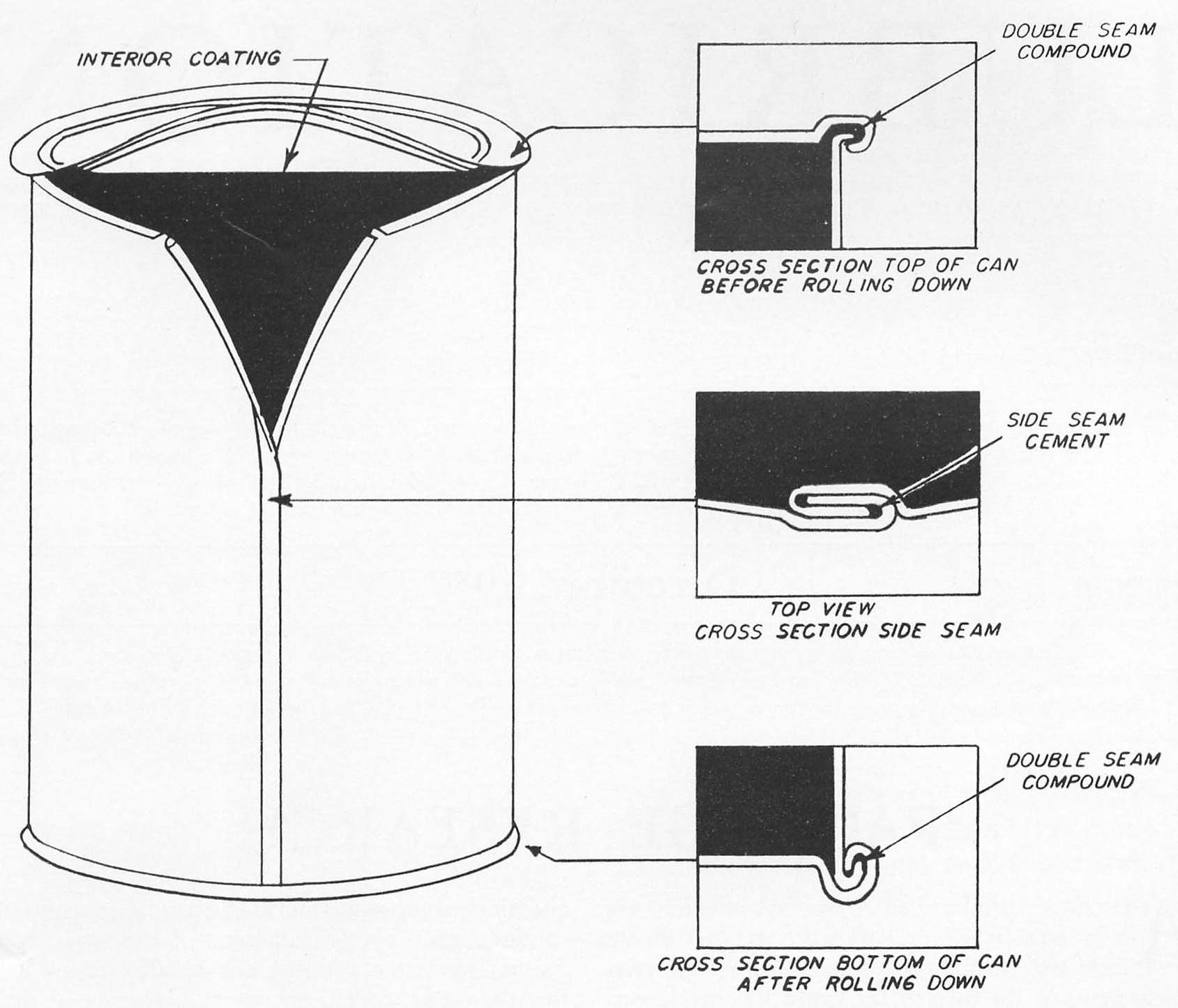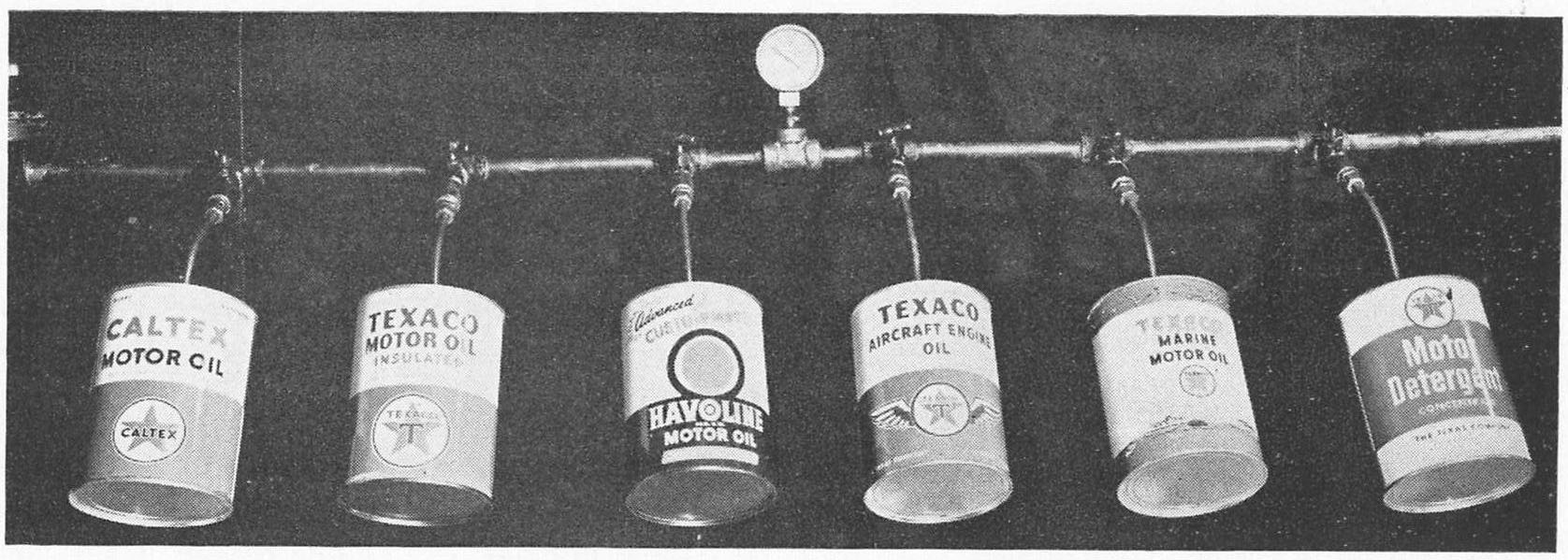Package Research
Lubrication, The Texas Company
December 1957
Package Research
Although product and process research are long established activities in the petroleum industry, formalized package research is relatively new. At the turn of the century kerosene was the major product, with small amounts of gasoline and a few grades of straight mineral oils and greases. The nature of these products did not require special containers; thus, packaging was dictated only by convenience in distribution.
The situation today is entirely different. We are in a specialized age where large numbers of petroleum products have been developed with “tailor-made” properties. In addition, the petroleum companies have entered the field of petrochemicals and are faced with marketing all of these products in suitable packages. The complexity of the packaging requirements is further complicated, since each product may be marketed in several containers of different sizes.
The packages of today still serve as a convenient means of distribution, but consideration must now be given to other important aspects. Process and product research has resulted in premium products, and it is obvious that quality and protection by the package is mandatory, or the consumer will not receive the full benefit of research developments. Many of the properties that are characteristic of the present products are due to the incorporation of chemical compounds or additives. Consequently, the individual component parts of containers must neither affect the product nor be affected by is so that the customer will receive full measure of quality and quantity. Another point of consideration is cost. A great effort is made to find the most economical package components that are satisfactory for use with a particular product, in order to reduce the overall cost to the ultimate consumer. A further consideration in times of national emergencies is the use of non-critical materials.
The American Petroleum Institute’s “Glossary of Packaging Terms” defines a package as a container which holds the product of sale, such as: a can, bottle, jar, collapsible tube, carton, drum, etc. It therefore follows that a petroleum company’s package research program may encompass all forms of containers, including, in addition to the more conventional types of packages, railway tank cars, motor tank trucks, pipe lines, barges, and ocean-going tankers.
The primary consideration of the petroleum companies is to assure themselves that the refinery quality of their products is protected from contamination or loss during delivery to the customer. The discussion which follows, briefly describes the precautions that a petroleum company may take in this regard through its research efforts.
Container Components
To paraphrase an age-old saying that “a chain is not stronger than its weakest link,” a container is no better than its poorest component. The basic parts of the more familiar containers that are used in the petroleum industry for packaging lubricating oils are illustrated in Figure 1 by the exploded view of a one-quart can. A description of these components follows, with a brief discussion of the difficulties which may be encountered in the selection of suitable package components.

Figure 1 - Seam construction of a quart can
Container Metals
Lubricating Oil Packages – Containers may be made from plain steel, aluminum, galvanized steel, terneplate (lead-tin alloy plate), or tinplate. Ordinary steel plate is the most economical of these materials and is entirely satisfactory for packaging lubricating oils; however, there are certain problems associated with its use. For example, containers made from plain steel plate are subject to rusting before filling, due to contact with oxygen or moisture. Therefore, an oil-insoluble organic coating is usually applied to the container interior in order to protect the metal surface from rust prior to filling with the product. The exterior may also be painted, enameled, or lithographed to be decorate and protect.
Chemical Specialty Packages – Unlike lubricating oils, certain types of chemical specialty products and petrochemicals are mildly corrosive. Hence, if steel containers are used to package these products, interior coatings are required for the dual purpose of protecting the container both before and after filling. Uncoated steel containers are unsatisfactory, since they may corrode to the point of perforation of the metal with resultant loss of the product. The mechanism by which such perforation occurs is basically electrochemical in nature and involves the transfer of electrons from the positively (anodic) to the negatively (cathodic) charged areas on the surface of the metal.
Uncoated containers made from metals other than steel may also be subject to corrosion by certain chemical specialty products. This corrosion is often chemical in nature and may be continuous, wherein the corroded material is soluble in the packaged product and fresh metal is therefore continuously exposed to the corroding environment. In such instances, the packages product will be contaminated with the soluble corroded material and may eventually be lost due to perforation of the container. This can be combated by selecting a metal for the container that will develop a film that is insoluble in the corrosive medium. Protection of the metal from further corrosion is thus obtained through the physical barrier of the film that is formed. When these containers are abused in service, however, there is a possibility that the product may be contaminated with flakes of the insoluble film.
One sure way of overcoming container corrosion and product contamination from this source, is to use expensive unreactive metals. Usually this solution is not economically feasible. A more attractive solution in most cases is the use of plain steel in combination with a suitable plastic coating.
Interior Coatings
The many types of plastic coatings very considerably in their individual characteristics. Some are readily softened or dissolved by petroleum products. They also differ markedly in their flexibility and resistance to moisture and to products that may be alkaline or acidic in nature. For example, an oleo-resinous coating has excellent flexibility and it is satisfactorily resistant within the pH range of most lubricating oils; however, if the product becomes contaminated with water the coating may soften excessively. An epoxy type coating is non-brittle and has excellent resistance to moisture and products that are alkaline in nature. On the other hand, a pure phenolic coating has excellent resistance to moisture and products that are slightly acidic, but it may be quite brittle. Consequently, phenolic coatings usually contain modifying agents to improve their flexibility. Usually a combination of an epoxy and phenolic coating will retain the desirable characteristics of both types of coatings and may be used with a variety of chemical specialty and lubricating oil products.
Regardless of the type coating used, it must be applied in a certain minimum thickness to insure a continuous protective film. If the coating has any breaks, or pinhole perforations, the exposed areas of the metal may become alternately positively and negatively charged. If the packaged product contains an electrolyte of any sort, an electrolytic cell may be formed and corrosion will occur by a similar mechanism. Corrosion reactions of this type are controlled by the size of the cathode. If the action occurring at the cathode loosens the bond of the coating to the surrounding metal surface, thus enlarging this area, the transfer of electrons from the anode will be increased and the container may eventually become perforated.
Side Seams
Four thicknesses of metal are usually rolled together to make the side seam, thus forming the cylindrical shell of the can body. These seams are made leak-proof by sealing with either solder or a polyamide resin. If soldered seams are required, it is necessary to construct the containers from tinplate or terneplate, since solder will not adhere satisfactorily to bare steel unless strong fluxes are used, and these introduce the further problems of complete neutralization or removal. Furthermore, if an organic interior coating is also used, it may be damaged adjacent to the seam by the temperature necessary for proper application of the solder. Thus, an extra manufacturing step is required to repair this damage.
On the other hand, cemented side seam, or resin-sealed containers, may be constructed from any type of plate. There are also no problems with damage to the interior coatings or outside lithography in the manufacture of containers of this type. Consequently, cemented side seams containers are more commonly used in the petroleum industry.
While at first glance it would appear that the cemented side seam can would not be as strong structurally as the soldered can, pressure tests have demonstrated comparable ability to withstand any expected internal pressure build-up that may occur during their storage life. (Figure 7)

Figure 7 - Pressure testing of one quart cans.

